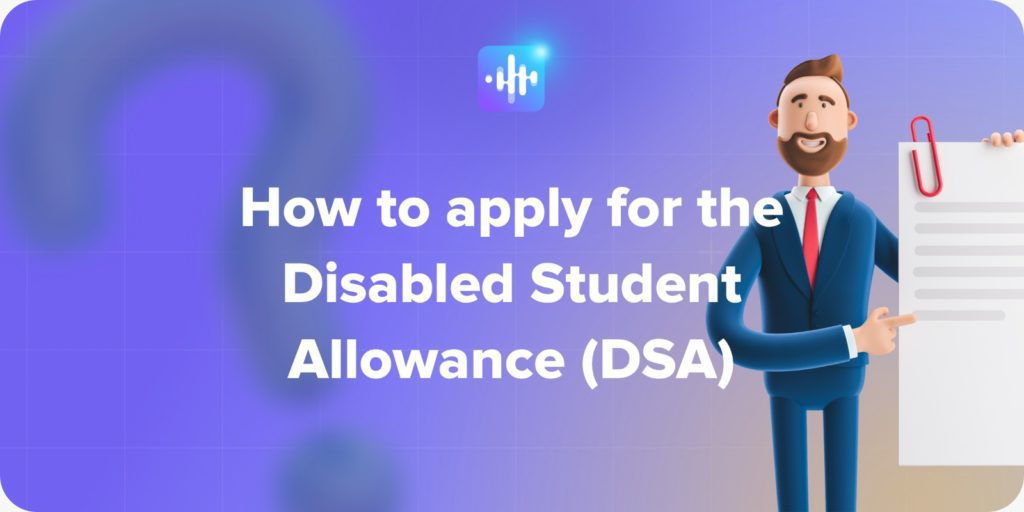Disabled Students’ Allowance (DSA) is a non-repayable grant available to UK students with learning difficulties and impacted disabilities. Dyslexia is a learning difficulty which is classed as an eligible diagnosis for receiving DSA at university, but how much is offered to students struggling with this condition?
 How does Dyslexia impact a student’s learning and ability to study?
How does Dyslexia impact a student’s learning and ability to study?
Dyslexia is a condition which impacts a student’s ability to read and spell fluently. These are key factors when it comes to studying and learning and therefore students with this diagnosis may need assistance to give them the best chance at succeeding academically. Students with dyslexia can struggle with listening & taking notes at the same time, managing abbreviations, new words and pronunciations. It can be difficult for dyslexic students to stay organised and manage their time efficiently. It can take them significantly longer to write and type than neurotypical and non-disabled students and therefore these effects of dyslexia on a student affects their ability to learn at the same rate as others.
What can DSA offer to students with Dyslexia?
Firstly, it is important to note that DSA is not typically issued in a form of a payment (unless you are a student in Scotland, see more on that here) but as a range of tools, programmes and assistive technology. A needs assessment will be offered to the student to help them understand what forms of aid will be the most beneficial for their learning. Many students with dyslexia benefit from non-visual forms of study tools such as auditory note taking programmes like Jamworks. The Jamworks Pro subscription can be offered as a form of DSA to students with a dyslexia diagnosis to record their lectures for them and transcribe lecture notes into written form. The app creates summaries of the highlight clips created in lecture sessions and there are a wide range of accessibility tools for dyslexic students to choose from to make visuals easier to process, such as colour changes, light and dark mode and font sizing. DSA can also offer students with Dyslexia a non-medical helper such as a transcriber or specialist note-taker. Specific technology such as a keyboard, laptop or live scribe pen. Software for mind mapping can be offered, as well as automated reading programmes.
What is the maximum amount of DSA that students with Dyslexia can be offered?
The maximum amount of DSA offered to students differs depending on what country you are studying in. Students studying in England can expect to be offered a range of aid in a number of forms up to the value of £25,575 per year. Students with dyslexia studying in Wales can be offered a maximum of £32,546 per year for study-related allowance. Students in Northern Ireland can receive up to £25,000 worth of DSA for dyslexia. In Scotland this differs slightly as while the maximum allowance for dyslexic students is £25,680, this can be paid to the student directly, along with an issued list of what software, assistance and tools the money should be used to pay for. These figures are just rough guidelines however, and a student’s individual needs will be taken into consideration to determine exactly how much and what forms of help they will benefit from best.
How do I apply for DSA for Dyslexia?
Students with dyslexia can apply for DSA by logging into their student finance account and clicking “Apply for DSA”. If you are not applying for student finance, you can fill out a DSA1 form and include your supporting evidence. It is important that all students with a dyslexia diagnosis access the range of tools and resources that can be offered to them to give them the same learning and studying abilities as non-disabled students.
I think I have Dyslexia, but I haven’t been diagnosed?
DSA can only offer students aid with a confirmed diagnosis. If you think you may have dyslexia it is recommended to speak with your GP to run tests and then you can go to the British Dyslexia Association to discover more on how to set up a Dyslexia Assessment.


